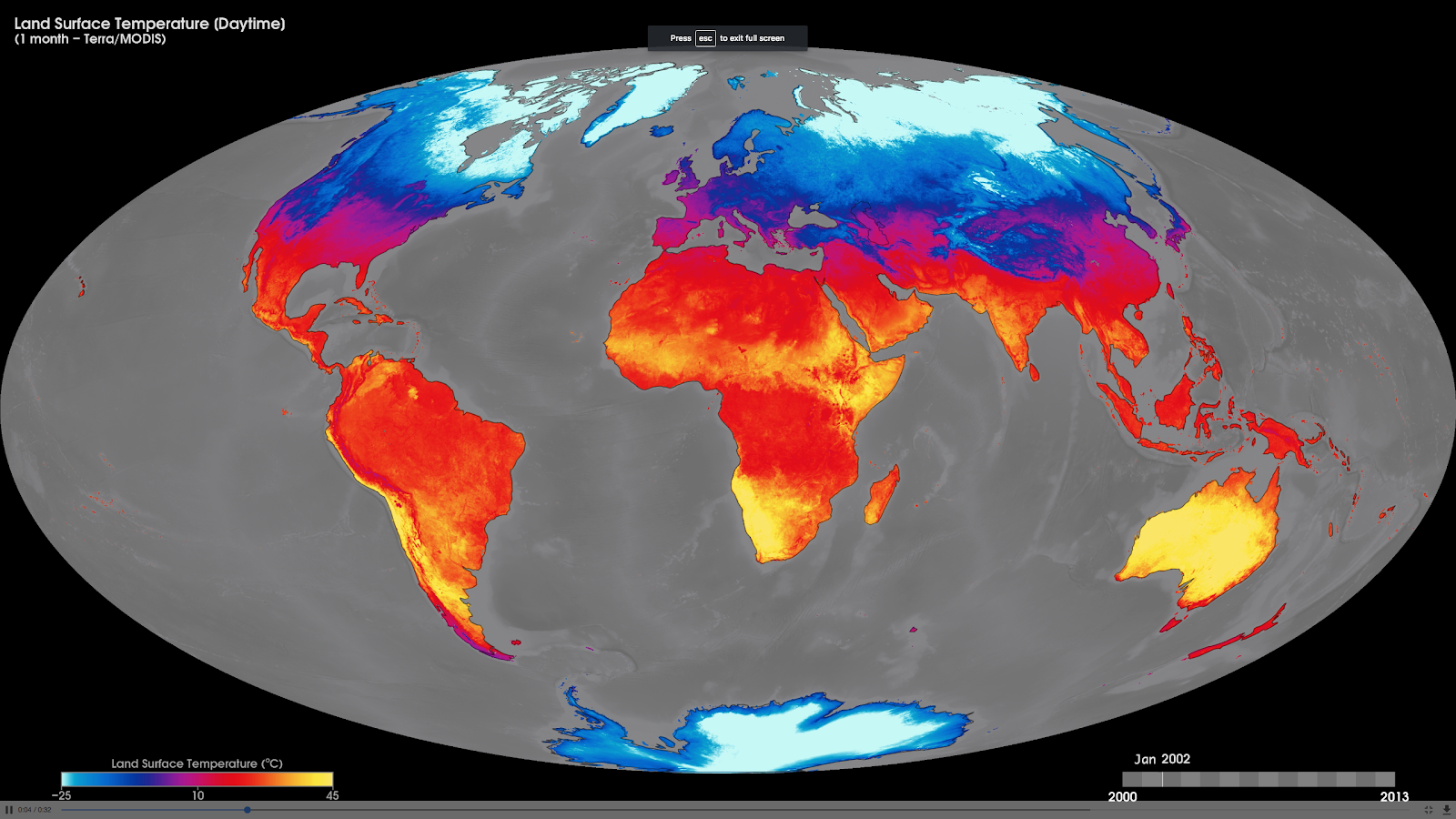Lesson Plans
Using Models in Climate Change Research
Overview
Check out the Arctic and Earth SIGNs video to explore how climate models are used in climate change research.
Materials Required
- YouTube Video - Dr. Katie Spellman and guest scientist Dr. Nancy Fresco
- News Article: 2017 was second-warmest year on record: NASA Five warmest years on record have all occurred since 2010
Procedure
1. Watch the Arctic and Earth SIGNs video on the right with Dr. Katie Spellman and guest scientist Dr. Nancy Fresco, an expert on climate change models, to learn about what a model is and how it is used in climate change research.
2. Read the following article recently in the news around the country, and reflect on the questions following the article.
Reflection questions:
- Using what you learned from the model video, what general steps do you think they took to make the model shown in the map above?
- Why do you think the models used by NASA and NOAA gave different results? (How would the different time periods collected by each agency affect the result? Is there anything else that might affect the results?)
- Do you think temperature data collected by your students could help improve global temperature models? Why or why not?
Disciplinary Core Ideas:
- LS2A: Interdependent Relationships in Ecosystems
- ESS2A: Earth Materials and Systems
- ESS2B: Plate Tectonics and Large-Scale Systems
- ESS2C: The Role of Water in Earth’s Surface Processes
- ESS2D: Weather and Climate
- ESS2E: Biogeology
- ESS3A: Natural Resources
- ESS3B: Natural Hazards
- ESS3C: Human Impacts on Earth Systems
- ESS3D: Global Climate Change
Crosscutting Concepts:
- Patterns
- Cause and Effect
- Systems and System Models
- Stability and Change
Science and Engineering Practices:
- Developing and Using Models
- Obtaining, Evaluating and Communicating Information
ENDURING UNDERSTANDING:
- Climate change influences our lives.
- Everyone can understand and DO science.
NGSS themes addressed:
- Practices- Developing models, communicating information
- Cross-cutting concepts- Stability and change, Patterns, Cause and effect
- Disciplinary core ideas- LS2.A: Interdependent Relationships in Ecosystems;
- ESS2&3: Earth’s systems, Earth and Human Activity
Culturally-Responsive Curriculum Standards Addressed:
- A. Integrity of cultural knowledge that students brings with them
What are models and how are they used in climate research?


